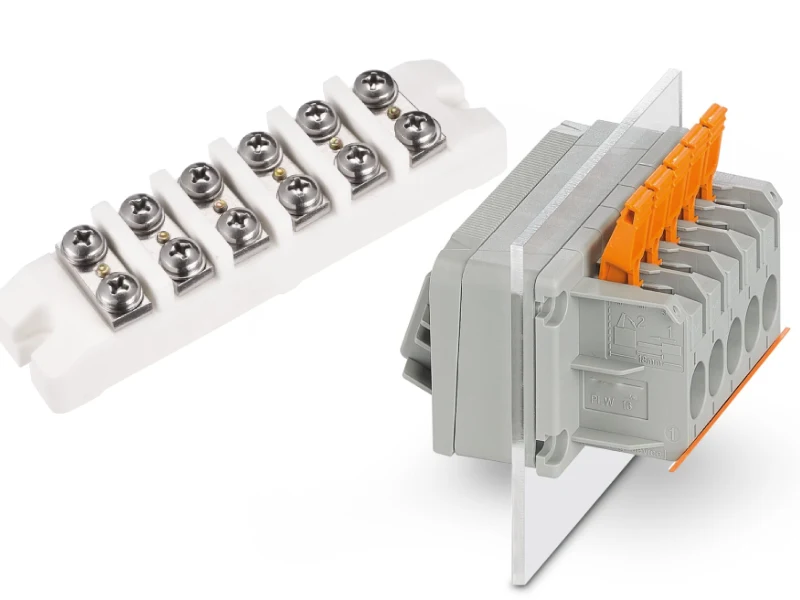Understanding the terms “NC” (Normally Closed) and “NO” (Normally Open) is fundamental to comprehending how thermostats function, particularly in industrial and enclosure applications. These designations define the default state of a thermostat’s electrical contacts when no external temperature influence is present. Grasping this concept is key to correctly wiring and applying thermostats for either heating or cooling purposes.
This blog post will demystify NC and NO thermostat operations. We’ll explore how these distinct contact configurations dictate whether a thermostat activates a device when the temperature falls (heating) or rises (cooling). Knowing this distinction is crucial for ensuring your thermal management system operates effectively and safely within your enclosures.
What is NC in the Enclosure Thermostat
In an enclosure thermostat, NC stands for Normally Closed.
This means that under normal operating conditions (i.e., when the temperature is below the thermostat’s set point), the electrical contacts inside the thermostat are closed, completing a circuit. When the temperature rises above the set point, these contacts will open, breaking the circuit.
NC thermostats are typically used for heating applications. For example, an NC thermostat would be wired to a heater: when the enclosure’s temperature drops too low (below the set point), the thermostat’s contacts remain closed, allowing the heater to turn on. When the temperature reaches the desired level, the contacts open, turning the heater off.
What is NO in the Enclosure Thermostat
In an enclosure thermostat, NO stands for Normally Open.
This means that under normal operating conditions (i.e., when the temperature is below the thermostat’s set point), the electrical contacts inside the thermostat are open, breaking a circuit. When the temperature rises above the set point, these contacts will close, completing the circuit.
NO thermostats are typically used for cooling applications. For example, an NO thermostat would be wired to a cooling fan: when the enclosure’s temperature gets too high (above the set point), the thermostat’s contacts close, allowing the fan to turn on. When the temperature drops to the desired level, the contacts open, turning the fan off.
NC and NO Enclosure Thermostat

Enclosure thermostats utilize two primary contact configurations: Normally Closed (NC) and Normally Open (NO).
Understanding this distinction is crucial for proper wiring and ensuring the effective thermal management of sensitive equipment within electrical cabinets. These configurations determine whether a connected device, such as a heater or a fan, will be activated when the temperature rises above or falls below a specific set point.
- Normally Closed (NC) Thermostat: In an NC thermostat, the electrical contacts are closed (completing the circuit) when the temperature is below the set point. When the temperature rises above the set point, the contacts open, breaking the circuit. NC thermostats are typically used for heating applications, turning a heater ON when the enclosure is too cold and OFF when it reaches the desired temperature.
- Normally Open (NO) Thermostat: Conversely, in an NO thermostat, the electrical contacts are open (breaking the circuit) when the temperature is below the set point. When the temperature rises above the set point, the contacts close, completing the circuit. NO thermostats are primarily used for cooling applications, turning a fan or cooling unit ON when the enclosure gets too hot and OFF once the temperature returns to a safe level.
Conclusion
Understanding the difference between NC (Normally Closed) and NO (Normally Open) contacts is fundamental to correctly applying cabinet thermostats. This distinction dictates whether your thermostat will activate a device when the temperature drops (NC for heating) or rises (NO for cooling). Correctly identifying and wiring these ensures optimal thermal management for your sensitive equipment.
Misunderstanding NC and NO can lead to improper system function, risking both equipment damage from overheating or freezing, and wasted energy. By correctly configuring your thermostat, you ensure efficient and precise temperature control, protecting your valuable assets and extending their operational lifespan.
For reliable and accurately specified cabinet thermostats, look no further. We offer a comprehensive range of wholesale NC and NO models, designed to meet diverse industrial needs. Contact us today to secure the right thermal solutions for your projects and ensure peak performance and safety.




